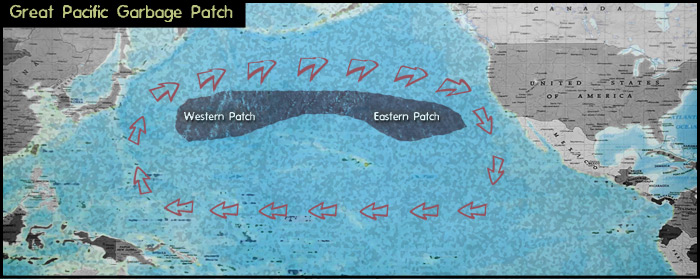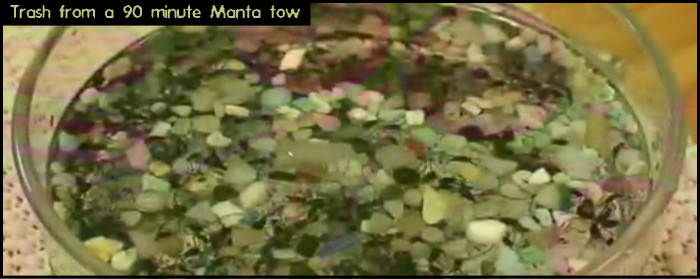The Great Pacific Garbage Patch - What is it? What Does it Look Like?
So you can’t really call it a garbage patch in any real sense of what we’d all imagine as a patch of garbage. In fact, it’s really more like a really remote place where you’re more than likely to see some trash floating around – in an area that you should never see trash … the middle of the pacific ocean.
Where is it?
Technically there are two patches, and eastern and western one. They’re formed by the North Pacific Gyre (which is the space in the middle of the current’s drawn). Note what else is in the middle of this gyre … Hawaii.
How big is it?
Defining the garbage patch is kind of tricky because there really aren’t a lot of people going out there to sample. Technically they are defining the region as anywhere that has more plastic than the average in the ocean. That means the entire gyre could technially have slightly more floating trash than average in the ocean. In my view, it’s not a great deffinition. But, that’s where you get claims that the “garbage patch” is twice the size of texas. Some even go as far as saying it’s twice the size of the US. Technically they would be correct. The problem is that the media jumps on these claims and overstates it. When people find out what’s really there, they start to doubt scientists, when it’s not scientists that are misleading anyone.
How much trash is there?
Don’t start thinking there is a visible patch of trash anywhere. Granted, if you were to sail through this area, you’d see a lot of floating debris (maybe 10 pieces a minute). But, most of it is tiny. You’d have to pick it up with a pair of tweezers they’re that small. The Manta Tows that the crew did pulled for an hour and a half. The images you see here are how much trash they collected in that time. It’s not as much as you’d think, given the headline, but remember, there shouldn’t be any out there.
What can we do about it?
Well, there really is no way to clean this up. It is mixed in to all the plankton in the ocean now and filtering it out would mean filtering out all the plankton too. So, that means that we’re really going to have to just think about how to stop the influx of trash into the ocean. Truth be told, I know the US let’s a lot of trash into the ocean. However, I’d be willing to say that this is a much larger problem. Just look at images you see from developing countries (I’ve taken a fair few myself). There is very little trash cleanup and thus, a LOT of their trash makes it into the ocean. That’s bad news for everyone. I say this so that you know I’m not blaming anyone here in the US. Obviously we can all do our part to use less and recycle, but even if one person every year accidentally looses track of ONE piece of trash, that’s six billion pieces of loose trash. We’re dealing with a problem of shear numbers here.
If you’re really passionate about this garbage patch, the whole effort has really been started by one guy – Charles Moore. You can read up on his mission here.
And below is a 12 minute Documentary by Lucy Marcus showing more images and science in the Pacific Gyre :


































































































